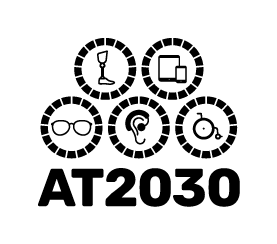December 3rd marks the annual observance of the International Day of Persons with Disabilities. Last week, the GSMA Assistive Tech programme published a study with detailed insights on the mobile disability gap in Kenya and Bangladesh. In that research, we highlighted the characteristics of mobile ownership and access amongst persons with disabilities but, also, how the different segments of disability use mobile services. More importantly, the report sheds light on how mobile has an enabler role in supporting persons with disabilities in their daily tasks and accessing essential services.
But what are mobile operators (MNOs) doing to drive inclusion of persons with disabilities? As part of our research this year, we investigated the different activities in which MNOs are actively working for the inclusion of persons with disabilities.
Customers with disabilities are as valuable users as non-disabled customers
Persons with disabilities are still less likely to own a mobile phone than non-disabled persons. Some factors related to the ownership gap are the cost of accessible handsets and the lack of knowledge of handsets suitable for persons with disabilities. Although mobile phones are certainly valued as communication tools, the perception of mobile as an assistive device is of utmost importance for increasing access and ownership to mobile. Furthermore, persons with disabilities are valuable users of mobile services, but they face specific challenges as these are not always designed inclusively. These challenges include service accessibility, affordability and safe and confidential use. Figure 1 Insights and barriers to access, ownership and usage of mobile phones by persons with disabilities along the customer journey
Figure 1 Insights and barriers to access, ownership and usage of mobile phones by persons with disabilities along the customer journey
Actions to include persons with disabilities
Some mobile operators are aware of the value of including persons with disabilities as, both employees and customers. They do this through several activities, which we have categorised as “Customer-facing activities” and “Internal activities”, shown in Figure 2. Figure 2 Framework on activities included in disability inclusion strategies by mobile operators
Figure 2 Framework on activities included in disability inclusion strategies by mobile operators
Customer-facing activities include different actions taken by operators such as informing customers of suitable products; making products and mobile services accessible; making customer services accessible and providing information in different formats; making physical shops inclusive; and, developing new products and innovations targeting the needs from customers with disabilities. Examples of these activities include:
- Telefonica’s and Telcel’s support to the Global Accessibility Reporting Initiative (GARI) to categorise the accessibility characteristics of handsets;
- K-cell and Etisalat offer tailored mobile packages according to the needs for data, calls or messaging services for customers with disabilities;
- Claro in Chile and Entel in Peru provide sign language interpretation for customers with hearing impairment;
- Turkcell and Turk Telekom in Turkey have supported the development of several digital products for customers with disabilities.
Through internal activities, some operators are challenging stigma, and negative perceptions around disability and are engaging in different activities, many related to human resources, to increase opportunities for persons with disabilities. These include: creating disability awareness and sensitisation amongst their employees; develop training and skills development programmes for persons with disabilities; employ persons with disabilities and create inclusive workplaces; and develop a disability inclusion strategy that cuts across different business units within the organisation, and that encourages other mobile and tech organisations to become more inclusive. Examples of these activities include:
- Open Mind by Telenor in Pakistan provides a training opportunity for persons with disabilities through a placement programme within different areas of the organisations. To be able to run the programme successfully, Telenor invested time and resources to create awareness and sensitise employees on disability;
- Safaricom in Kenya has set up a target to increase the number of employees with disabilities, intending to achieve the 5 per cent quota legally required for employers;
- Through work with SgEnable, a local agency dedicated to working for the employment, Singtel developed the Enabling work app that aims to create awareness about inclusive employment and disability in Singapore;
- Some mobile operators have inclusion strategies that go beyond their organisations. For instance, Singtel is part of the Singapore Business Network on DisAbility (SBNoD) and champions for disability inclusion as an employer and service provider.
Learning from others
In our case study report, we present several examples of what MNOs are doing in the different activities shown in the framework above. We also showcase the work that two operators are doing in a low- or a middle-income country. Turkcell in Turkey has a product development strategy that is inclusive of persons with disabilities, particularly users with visual impairment, such as My Dream Companion. In Kenya, Safaricom introduced interactive voice response (IVR) for their M-Pesa services to facilitate access to balance enquiry to customers with visual impairment.
By sharing these examples, we hope that others in the mobile and tech sectors get inspired and find areas in their organisations could be driving and leading the inclusion of persons with disabilities to close the digital inclusion gap.



